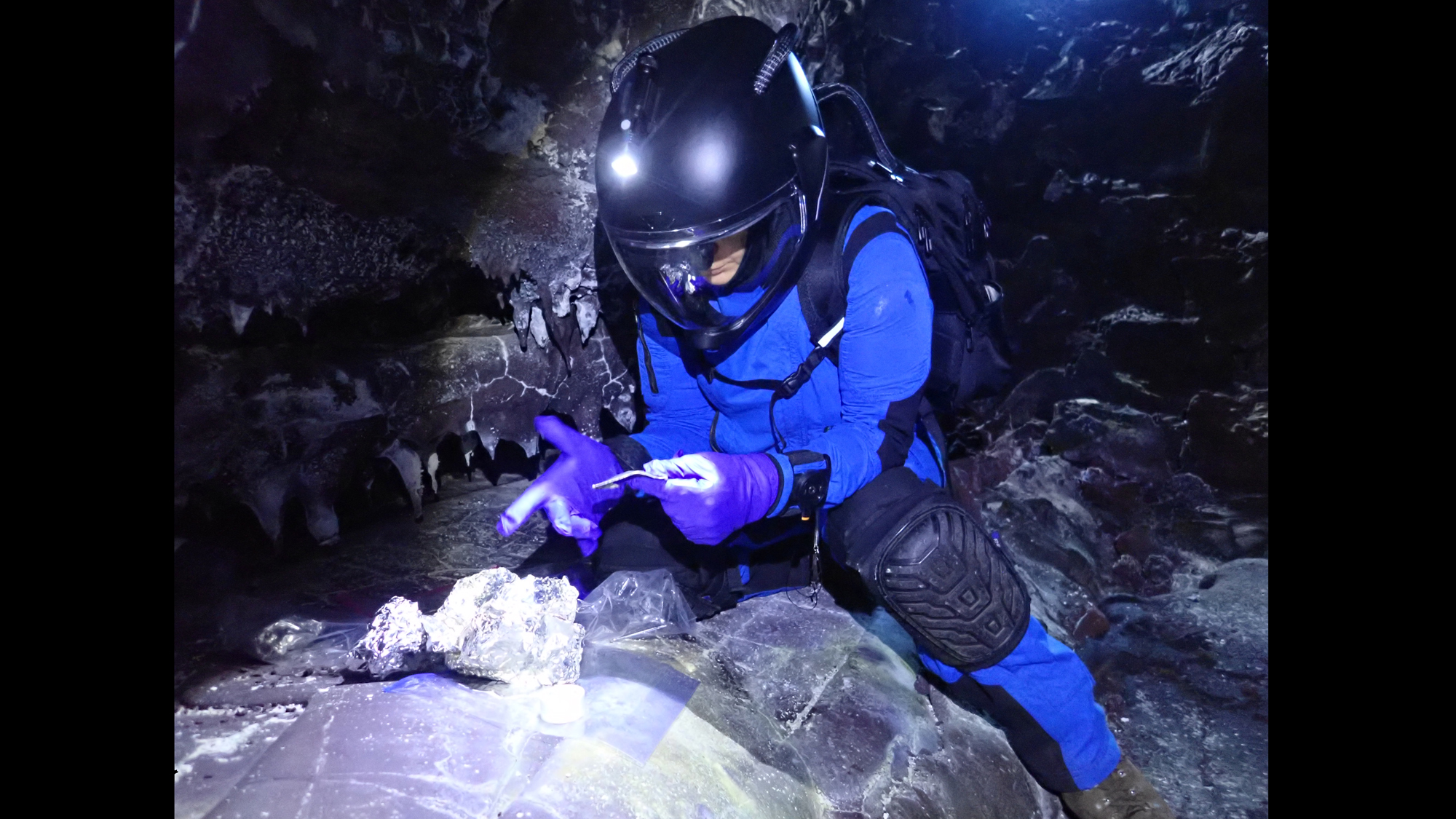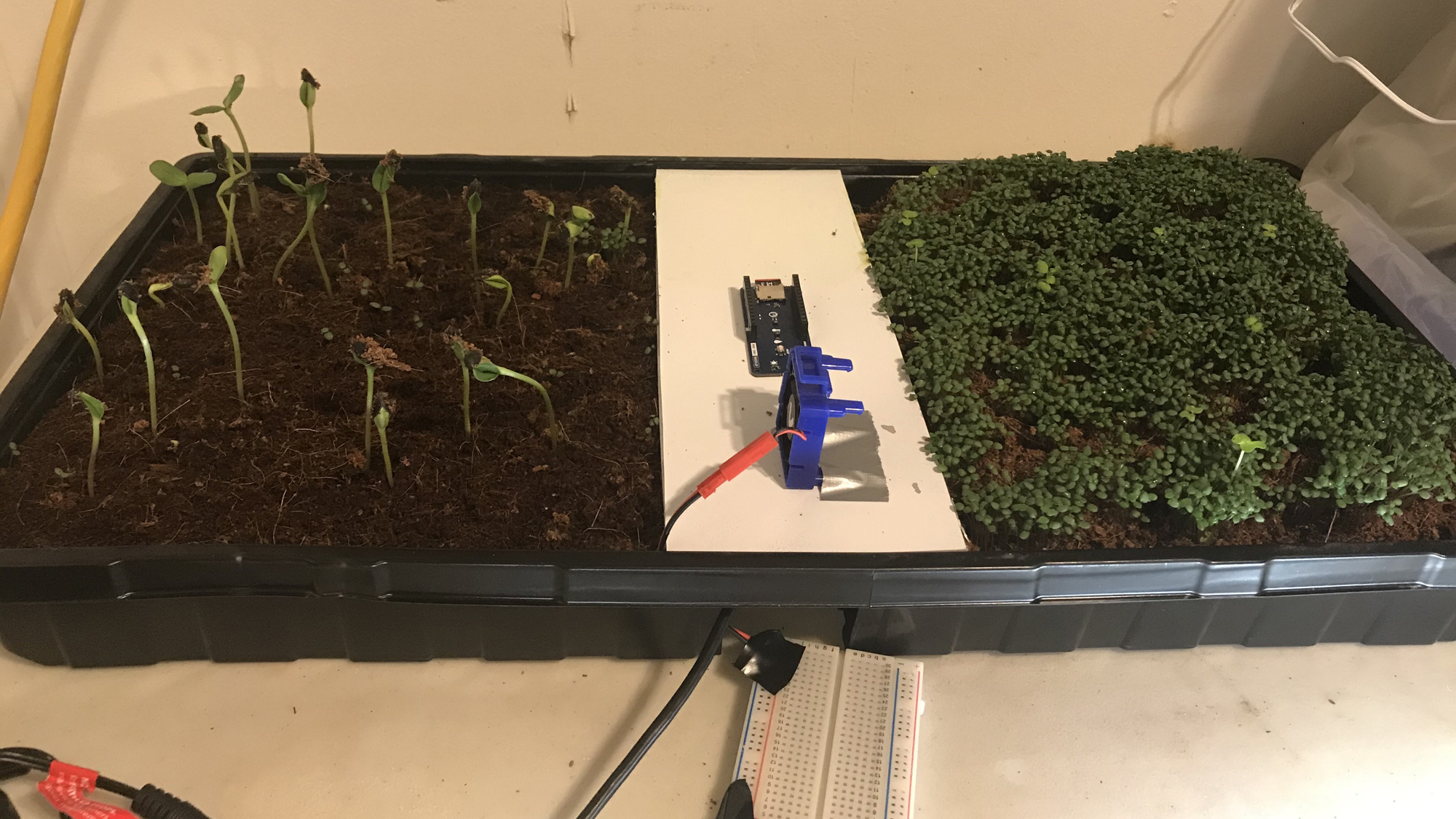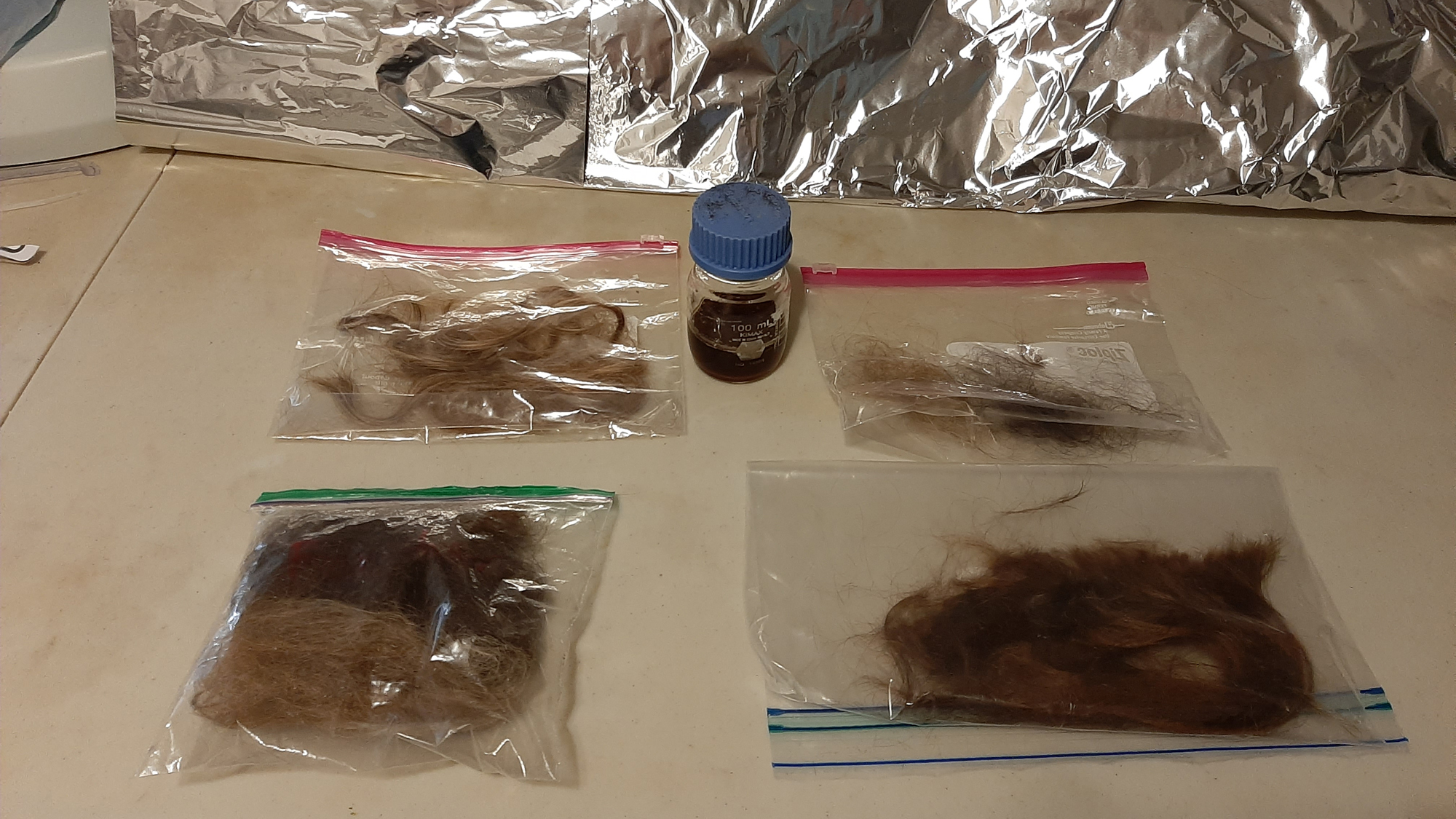Making hair fertilizer wraps up the Selene II lunar mission — Commander's report: lunar day 14
From hair fertilizer to life in lava tubes - wrapping up the Selene II simulated Moon mission at the HI-SEAS habitat.
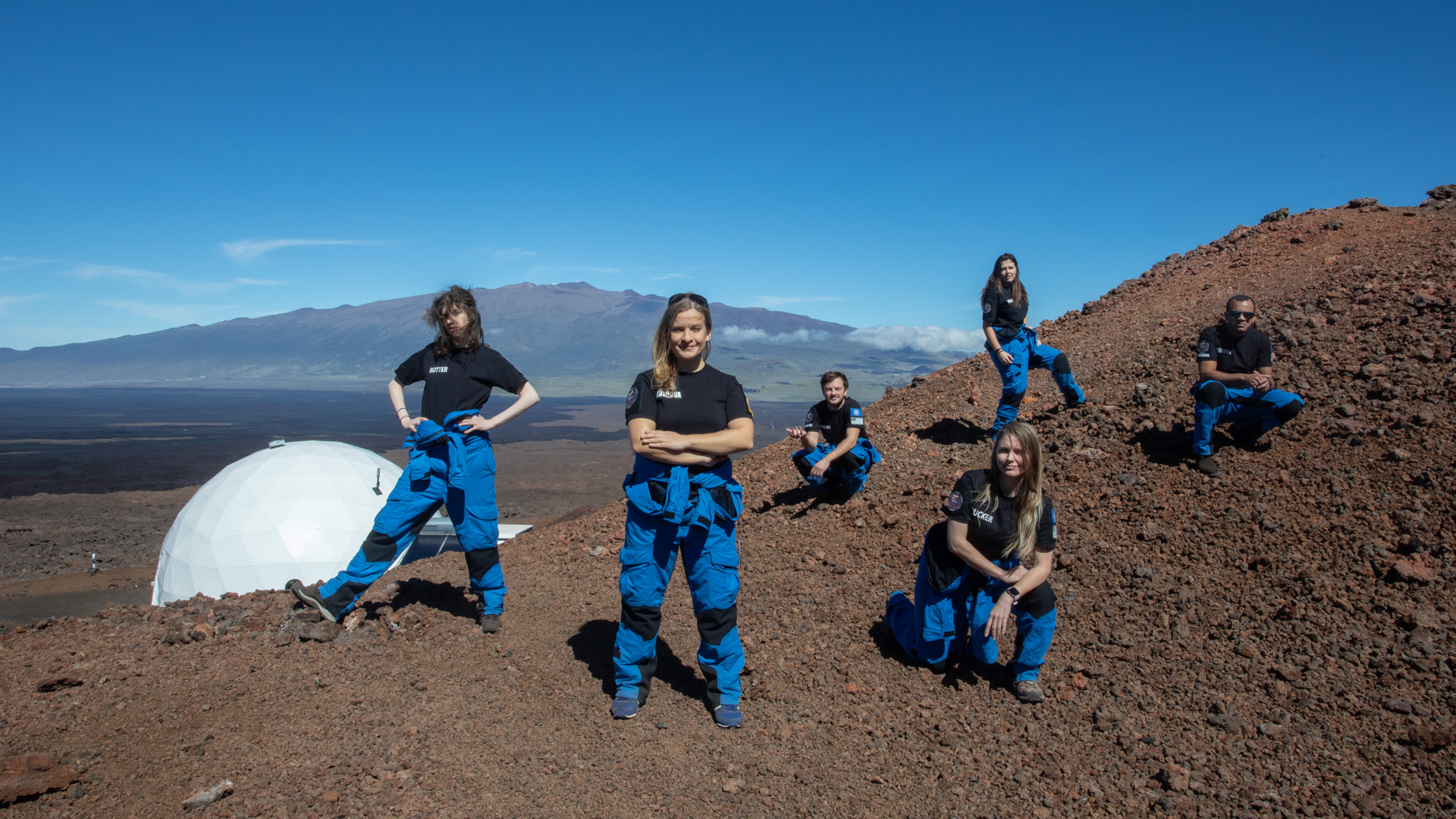
Dr. Michaela Musilova is the director of Hawaii Space Exploration Analog and Simulation (HI-SEAS) program, which conducts analog missions to the moon and Mars for scientific research at a habitat on the volcano Mauna Loa. Currently, she is in command of the two-week Selene II mission and contributed this report to Space.com's Expert Voices: Op-Ed & Insights.
Commander's report for the Selene II mission at HI-SEAS
Lunar Day 14 (Dec. 1, 2020)
Closing time. The last night of our mission definitely has that kind of vibe. We wrapped up everything that we could on this mission and we're even eating leftovers of leftovers for our last supper. The Selene II crew did an excellent job of saving at least a small amount of freeze-dried meat, fruits and vegetables so that our last meal wouldn't be composed of only carbohydrates. To be perfectly honest though, we did eat mashed potatoes, quinoa and bean curds for second-to-last supper as a compromise.
Related: Humor saved the day for the Selene II lunar analog mission — Commander's report: Lunar day 11
While the crew may not be very content with the selection of food that we're ending our mission with, they are actually efficient at portioning our different food supplies throughout the mission. Other crews that I have worked with were not as cautious. For instance, some used up all of our freeze-dried fruits or vegetables over the first few days of the mission and then they had to survive the rest of the mission with less varied meals.
Self-control and moderation were applied by most crewmembers during this mission, although there were some instances of "midnight munchies" when great quantities of our freeze-dried banana chips disappeared. This "habitat ghost" notoriously only appeared late at night when even I was already asleep, and I usually got to bed past 2 a.m.
Breaking space news, the latest updates on rocket launches, skywatching events and more!
Thinking of these amusing little episodes during our mission is putting a smile on my face. We sure had a great time together. We probably bonded the most during our meal times when we shared our personal stories and got to know each other well. With every story, I realized how unique and talented everyone is. The best part is how they all have such good hearts. Every one of them is giving back to their communities in different ways and their ambitions aren't selfish — quite the contrary. They're also very passionate about their work.
Related: Space food photos: what astronauts eat in orbit
We used small gaps in the strange atmospheric movements around our lunar habitat to get as many moonwalks done as possible. We could not afford to lose any more precious time for research outside the habitat because of dust storms. In this way, Crew Journalist Cassie Klos was able to get all of her lava tube fine art photography done. She used up all her film on the very last lava tube moonwalk. What great timing!
Crew Bioengineer Lindsay Rutter also collected all of the astrobiological samples she needed for her bioinformatics studies of large space biology data sets. Lava tube explorations were useful for Crew Systems Engineer Karen Rucker as well, as she came up with very helpful suggestions for how to improve our communication on the moon between the HI-SEAS base and remote areas like lava tunnels using amateur radio communication technologies.
Related: Powering through challenges of the Selene II lunar analog mission — Commander's report: Lunar day 7
In the habitat, Crew Engineer Ben Greaves kept himself very busy with fostering an international collaboration with Dr. Swee Ching Tan, a researcher at the Department of Materials Science and Engineering at the National University of Singapore. Specifically, they are exploring a copper-based hydrogel developed by Dr. Tan and his lab to determine its potential as a more sustainable method of controlling humidity in space-based plant growth. Ben's work is sponsored by the Secure World Foundation as it pursues their mission to support both education and human and environmental security. Finally, Operations Officer Fabio Teixeira tested all of his high tech Hypercubes equipment, earning him a new nickname: "Mr Gadgets."
Even I was able to work on my own astrobiological research projects, despite the dust storms and prioritizing my crewmembers' research projects. As commander, my goal is to make sure that everyone can achieve as much as they hoped to and get along as a team during the mission. Ideally, I try to encourage the crew to feel like a family. In this way, they tolerate each other's differences better and try harder to help each other. The biggest reward for me is to see them succeed in their projects and treat each other well. Then, I can take some time to focus on my own work.
During this mission, I was very grateful that I was able to collect biogeochemical samples in the so-called Kessel lava tube. The lava tube's name is based on a "Star Wars" reference. I allow crewmembers to name lava tube systems if they discover new ones. It just so happens that one particular crewmember from a mission a couple of years ago discovered a lot of lava tubes. This is why most of the HI-SEAS surroundings have names related to "Star Wars" and "Lord of the Rings."
The Kessel tube system is very interesting from an astrobiology perspective, which is why I am collaborating with teams from NASA Goddard, the University of Maryland, Georgetown University and others. We're trying to understand what kinds of lifeforms exist in these underground caves on Earth, how they survive there and if we could potentially find similar life on the moon and Mars. We're also interested in how astrobiology research in spacesuits could be conducted on Mars one day by studying how we are performing such research during our missions at HI-SEAS. We are looking into both how spacesuits can be improved for Marswalks and moonwalks, as well as how we'll need to develop tools astronauts will need to conduct research on the moon or Mars, despite the constraints of the thick spacesuit gloves and limited mobility when working in the suits.
I'm looking forward to the results of all of these new technology demonstrations and research projects that we have been conducting during our mission. Some projects have become part of multiple missions, such as growing different types of vegetables and herbs for multiple crews to take care of and, ultimately, consume.
A unique project that has been carried out by many analog mission crews is a hair fertilizer experiment designed by high school students in Slovakia. I have been organizing a competition for high school students called Mission to Mars in Slovakia, in collaboration with the electric utility company Slovenske Elektrarne. The winners of the competition have their experiments performed during an analog space mission at HI-SEAS. The idea behind the hair fertilizer project is that facial and other body hair is usually cut off and thrown away on a regular basis. What if we could dissolve the hair and use it to fertilize soil for growing plants on missions? This is exactly what we have been testing on missions and it has been very successful. The Selene II crewmembers actually donated a lot of hair for this purpose!
Commander Musilova signing off with a heavy heart at the end of the Selene II mission. I'll miss my crew a lot, but I'll also be back in a few days as the Commander of the SENSORIA M3 lunar mission. Another mission here I come!
Follow Michaela Musilova on Twitter @astro_Michaela. Follow us on Twitter @Spacedotcom and on Facebook.
Follow all of the Expert Voices issues and debates — and become part of the discussion. The views expressed are those of the author and do not necessarily reflect the views of the publisher.
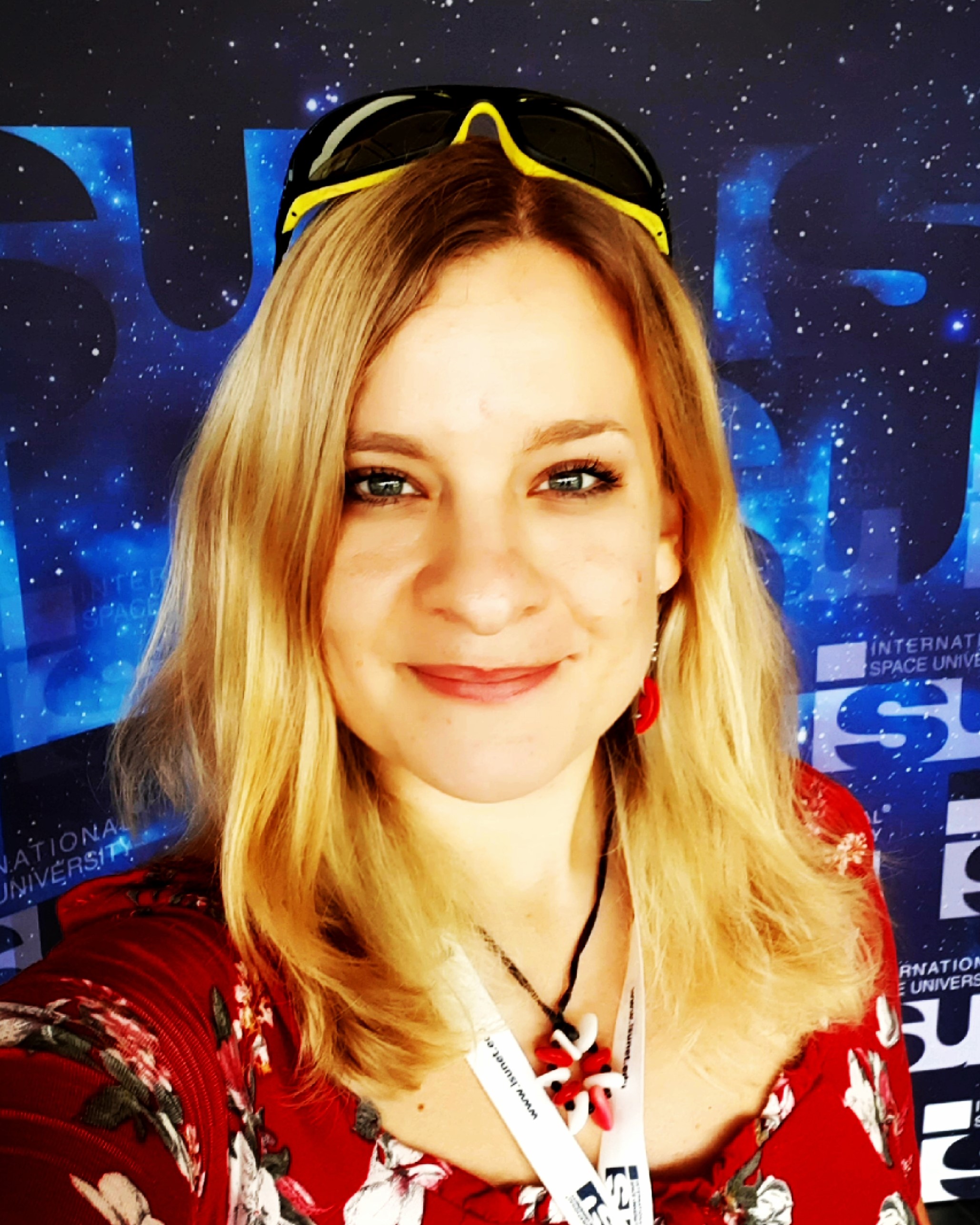
Dr. Michaela Musilova is an astrobiologist with a focus on life in extreme environments. She has a PhD degree from the University of Bristol and is a graduate from the International Space University's (ISU) Space Studies Program. Michaela's space research experience includes working at the NASA Jet Propulsion Laboratory, University of London Observatory, Canada-France-Hawaii Telescope, on NASA's and the U.K. Space Agency's MoonLite project, being an analogue astronaut and Commander of numerous simulated missions to the moon and Mars at the HI-SEAS station in Hawaii, and at the Mars Desert Research Station in Utah. Michaela is currently the Director of HI-SEAS, as part of the International MoonBase Alliance. She is also a visiting Professor at the Slovak University of Technology, Vice-Chair of the Slovak Organisation for Space Activities, Adjunct Faculty at ISU and the Senior Research Adviser for Mission Control Space Services Inc.
She has received numerous prizes and grants, including the Emerging Space Leaders Grant from the International Astronautical Federation (2016) and the Women in Aerospace – Europe Young Professional Award (2016), and she was selected as one of the most promising 30 under 30 by Forbes Slovakia (2015). Michaela is also actively involved in the Duke of Edinburgh's International Award, as a patron of the program in Slovakia and an Emerging Leader Representative for Europe, Mediterranean and Arab states. Furthermore, she enjoys participating in STEAM outreach activities from teaching at schools, giving public presentations, to working with the media and more, as well as encouraging people to pursue their dreams. For instance, she is an Advisory Board Member of the STEM Punks immersive programs for students and teachers.

